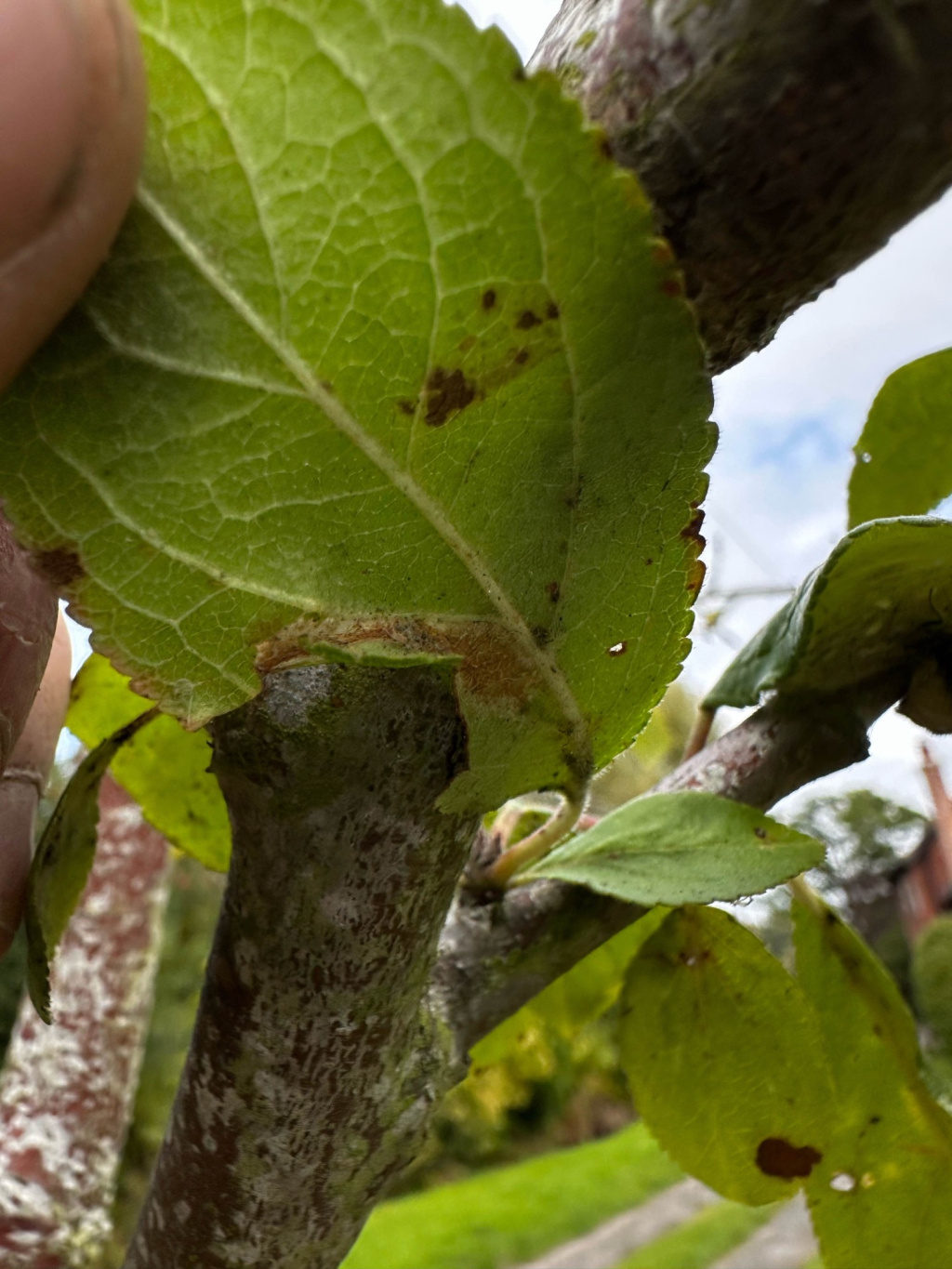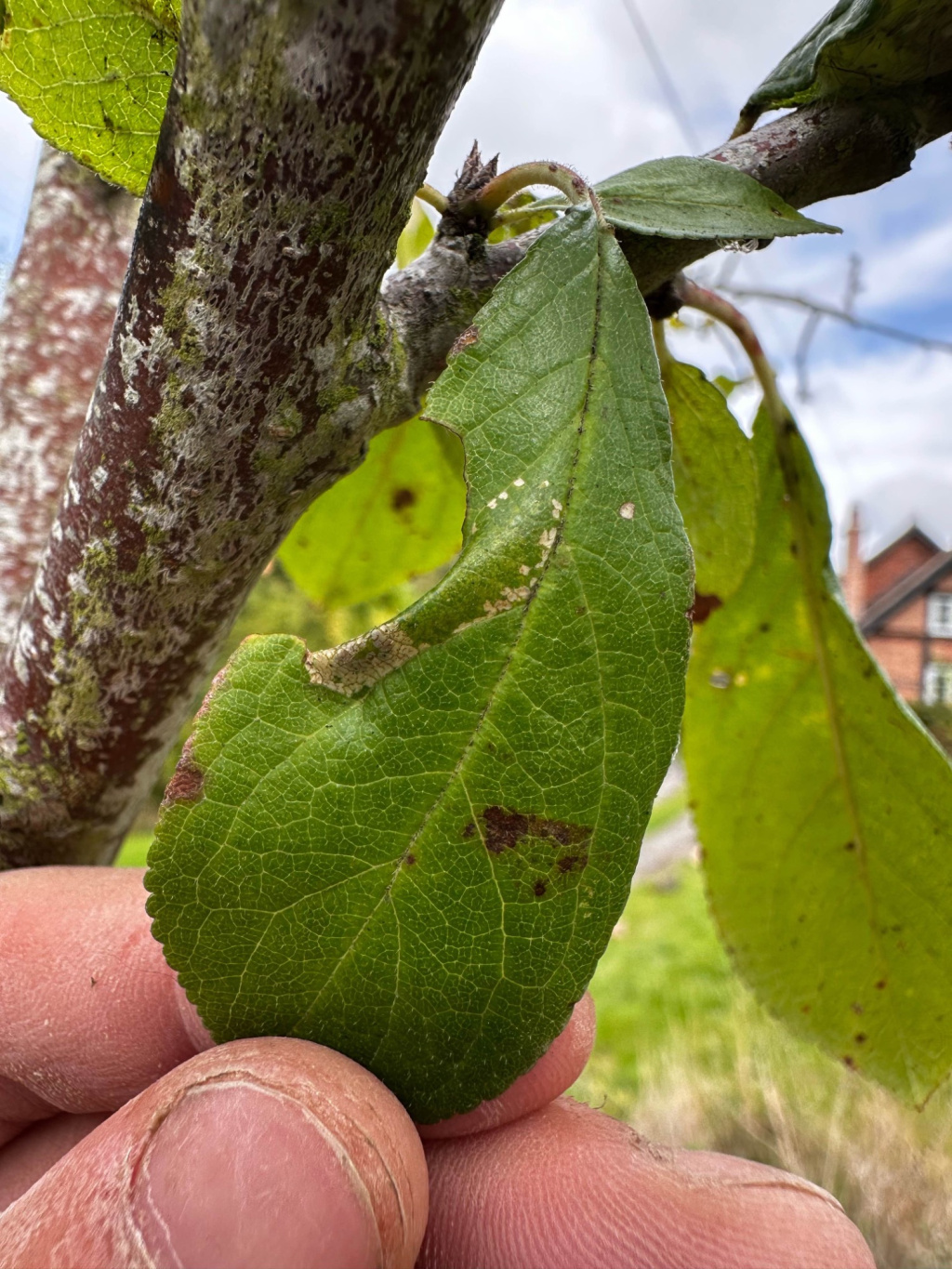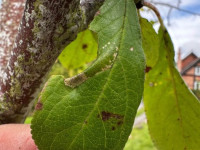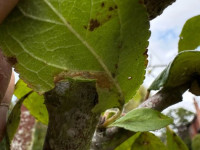 Leaf-miner: CAT R – Moth will need to be reared and possibly dissected –
Leaf-miner: CAT R – Moth will need to be reared and possibly dissected –  Larval Case: C1 – Distinctive Species –
Larval Case: C1 – Distinctive Species –  – click for General Verification Guidelines |
– click for General Verification Guidelines |  – click for Specific Verification Guidelines
– click for Specific Verification Guidelines  – Uncertain/Unknown – Insufficient Data
– Uncertain/Unknown – Insufficient Data  – Leaf Miner
– Leaf Miner
 – difficult to identify – detailed examination required, often a Gen Det and/or specimen and quality photographs are required.
– difficult to identify – detailed examination required, often a Gen Det and/or specimen and quality photographs are required.Confusion Species: Phyllonorycter hostis (Cryptic Apple Leaf-miner); Phyllonorycter oxyacanthae (Common Thorn Leaf-miner)
Mine Period Additional: None.
Mine ID Difficulty:
 – Care required in ID process as confusion with similar leaf mines. Quality photos of the mine required.
– Care required in ID process as confusion with similar leaf mines. Quality photos of the mine required. Mine Type/s: Blotch
Mine Feeding Method/s: Not Recorded
Mine Comment: The larvae create an oval, swollen blotch mine, usually located between two veins on the underside of the leaf. The damage is visible as whitish marks on the upper surface of the leaves, and the mined area on the underside appears brownish and wrinkled. This damage can lead to reduced crop yield in apple orchards. The larvae pupate within the leaf mine, and the pupal stage of the final generation overwinters there.
Breadsall – Sam Goddard©


Image Gallery
Distribution Map for Phyllonorycter blancardella
↳ 1 from After 2025
↳ 0 from 2020 - 2024
↳ 2 from Before 2020
If the Map Layers function fails, just refresh the page and it should be OK after. Use the +- zoom on the top left, or on a tablet, use two fingers to zoom. Remember, the last layer you ticked is the one which displays the popup information - they sit on top of each other - de-select then re-select, to see the popup values.
Bedrock Geology ** indirectly affects moth distribution by influencing the type of habitat and food plants available in an area. In turn, this may affect the types of moths that can thrive, or where they can most likely be found.
NBN Atlas UK Distribution for – Phyllonorycter blancardella
⚠️ Please wait for the map to load fully – do not click the link shown.
Note – the NBN Atlas datasets are listed in the map below and vary in their currency (uptodateness) – however,
the map does give a general indication of the moth's distribution across the UK.
Monthly Records By Year:
Phyllonorycter blancardella
( data includes both Larvae and Adult Stages )
Monthly Counts By Year: Phyllonorycter blancardella
( data is based on 'Adult' stage records only. )
First/Last Recorded Dates: Phyllonorycter blancardella
Adult-only & Anything [Larvae, Pupae, Adult, Mines]
Shading shows moth presence between dates
Click the colour discs below to Select/De-select as Required
Recordings By Year: Phyllonorycter blancardella
( All data includes both Larvae and Adult Stages )
Annual Growth Rate (AGR): Phyllonorycter blancardella
AGR: 4.68% | Total % Change: 200%
CUSUM Analysis: Phyllonorycter blancardella
Counts for the current year (2025) are pro-rated based on data available up to month 9 (September) to provide a full-year equivalent.
What the Y-axis "Cumulative Deviation" means: Cumulative Deviation shows the running total of how each year’s moth population count differs from the long-term average. i
Hectad (10kmx10km) Coverage: Phyllonorycter blancardella
( data includes both Larvae and Adult Stages )
Flight Periods – Indicative –vs– Recorded Data
Phyllonorycter blancardella
Phyllonorycter blancardella
( data includes Adult Stage only )
Flight Period chart – the grey hatched area above, which can cross one or more months, pictorially represents the best guess we have for this moth's flight periods [month/s]. The coloured lines represent the actual months seen in flight, from site observation records received between 2020-2025.
Mine Periods – Indicative –vs– Recorded Data
Phyllonorycter blancardella
Phyllonorycter blancardella
( data includes both Larvae and Adult Stages )
Mine Period chart – the grey hatched area above, which can cross one or more months, pictorially represents the best guess we have for this moth's mine periods [month/s]. The coloured lines represent the actual months seen mining, from site observation records received between 2020-2025.
Records Behind the Map and Charts - Phyllonorycter blancardella – 3 records available
Listed by Year - descending - scroll across to see all table columns
| Site Name | Tetrad | Date | Count | Stage | Source |
|---|---|---|---|---|---|
| Breadsall, Derbyshire | SK34Q | 01/10/2025 | 3 | mine | vc57_irecords_extract |
| Linacre Wood, nr Chesterfield | SK37G | 13/10/2009 | 1 | Larval Mine | vc57_danes_bc_data |
| Carvers Rocks, Hartshorne, Swadlincote | SK32G | 27/04/2001 | 1 | Adult | vc57_danes_bc_data |




